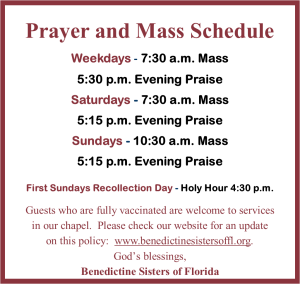 If you’ve ever had the good fortune to be in Rome. And found yourself In St Peter’s square, you surely have seen the great obelisk that stands in the middle of the square. [Whether you’ve been to Rome, or not, – it is really there.] It about four and half thousand years old and originally stood in the temple of the sun in the Egyptian city of Heliopolis. But it was bought to Rome by the dreadful Emperor Caligula and it was set right in the middle of a Roman racetrack known as the Circus of Nero. It was in that Circus that St. Peter was martyred, and the obelisk may well have been the last thing on this Earth that Peter saw. On top of the obelisk there now stands a cross representing the cross of Jesus’ crucifixion. But in ancient times there was a gold ball representing the sun. On the pedestal of the obelisk there are two inscriptions. The first of them in Latin, “Christus vincit, Christus regnat, Christus imperat”, freely translated in the words of a hymn “To Jesus Christ, Our Sovereign King:” Christ Jesus Victor! Christ Jesus Ruler! Christ Jesus, Lord and Redeemer! The other inscription, “The Lion of Judah has conquered.” In the two we have the language of victory. Christianity has triumphed by the power of the cross and triumphed over even the greatest power that the ancient world had known, the Roman Empire. Here in the middle of St. Peter’s square stands the obelisk bearing those triumphant inscriptions.
If you’ve ever had the good fortune to be in Rome. And found yourself In St Peter’s square, you surely have seen the great obelisk that stands in the middle of the square. [Whether you’ve been to Rome, or not, – it is really there.] It about four and half thousand years old and originally stood in the temple of the sun in the Egyptian city of Heliopolis. But it was bought to Rome by the dreadful Emperor Caligula and it was set right in the middle of a Roman racetrack known as the Circus of Nero. It was in that Circus that St. Peter was martyred, and the obelisk may well have been the last thing on this Earth that Peter saw. On top of the obelisk there now stands a cross representing the cross of Jesus’ crucifixion. But in ancient times there was a gold ball representing the sun. On the pedestal of the obelisk there are two inscriptions. The first of them in Latin, “Christus vincit, Christus regnat, Christus imperat”, freely translated in the words of a hymn “To Jesus Christ, Our Sovereign King:” Christ Jesus Victor! Christ Jesus Ruler! Christ Jesus, Lord and Redeemer! The other inscription, “The Lion of Judah has conquered.” In the two we have the language of victory. Christianity has triumphed by the power of the cross and triumphed over even the greatest power that the ancient world had known, the Roman Empire. Here in the middle of St. Peter’s square stands the obelisk bearing those triumphant inscriptions.
In 1925, Pope Pius XI universally instituted the Feast of Christ the King to be celebrated on the last Sunday of October. However, since the reform in the liturgical calendar in 1969, the feast falls on the last Sunday of Ordinary Time, the Sunday before Advent.
At the time of the institution of the feast, secularism and dictatorships in Europe were on the rise. Respect for Christ and the Church was waning. Today, we witness the same sense of distrust of authority – accelerated by political situations and the rise of individualism. Some reject the titles of “lord” and “king” for Christ believing that such titles are borrowed from oppressive systems of government. History proves that some kings have been oppressive. Others have been converted to a more Christian style of ruling … often by the influence of a woman.
In 2015, during the Jubilee year of Mercy, Pope Francis added another part to the title: “…the living face of the Father’s mercy.” The combined readings this year for the solemnity give us a glimpse of how Christ is at the same time both king and the face of the Father’s mercy. In contrast to the oppression so prevalent in Jesus’ day, he connected his role as king to humble service, and taught his followers to be servants as well. “You are my disciples if you do what I command you: love one another as I have loved you.”
 As we observe the feast of Christ, the King, we are celebrating a ruler who was willing to die for us, for all humanity, to give us true freedom. Jesus radically redefined the concept of kingship. His example of love and kindness is lived out by us, his followers, in our reaching out to those in need – beginning with those we live with.
As we observe the feast of Christ, the King, we are celebrating a ruler who was willing to die for us, for all humanity, to give us true freedom. Jesus radically redefined the concept of kingship. His example of love and kindness is lived out by us, his followers, in our reaching out to those in need – beginning with those we live with.
At the opening of every Eucharistic gathering, the celebrant greets us with the words: “The Lord be with you.” In tomorrow’s opening hymn we will sing: “Praise, my soul, the King of Heaven.” And in the responsorial psalm we’ll proclaim: “The Lord is my shepherd.” We profess in the Creed: “I believe in one Lord Jesus Christ.” We often raise a hand in benediction as we sing: “May the blessing of the Lord be upon you.” Deep down do we believe JESUS IS LORD or is it just from force of habit that we say or sing those titles for Jesus? If we believe it’s true Jesus is Lord, why do we sometimes scramble to find a substitute to replace the word “Lord?”
It strikes me that while we may struggle with the concept of Jesus as king … somehow, especially like on today’s feast (the Presentation of Mary) most of us have no problem calling Mary queen: queen of the universe, queen of heaven, Regina Caeli.
Our prayer intention this week is for the gift of a grateful heart. Look at the person on either side of you – and across the aisle – with eyes filled with the compassion of Christ. Let us pray that we can portray to the world the beneficence of a humble king, truly putting flesh on our Corporate Commitment “to respond with compassion to the hungers of the people of God.”
~Reflection by S. Roberta Bailey, OSB, Prioress
First Reading Ezekiel 34:11-12, 15-17 Second Reading1 Cor 15:20-26, 28
Gospel Matthew 25:31-46
Continue Reading



